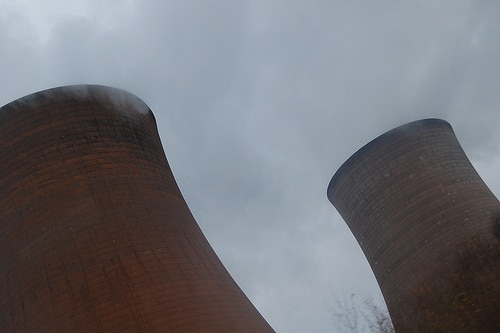
New research from the Brattle Group in America — an update to an analysis conducted in 2010 — finds that 59,000 to 77,000 MW of coal plant capacity are likely to retire over the next five years as a result of the impact of emerging Environmental Protection Agency air quality regulations on coal-fired power plants. This is approximately 25,000 MW more than previously estimated.
Since the 2010 analysis was conducted, both natural gas prices and the projected demand for power have decreased, and environmental rules have been finalized with less restrictive compliance requirements and deadlines than previously anticipated. As a result, coal plant retirements are accelerating. The financial and operational implications could be substantial, even if overall reliability is not significantly affected, according to the study’s authors who found that $126 to $144 billion will be needed to retrofit and replace coal capacity. As of July 2012, about 30,000 MW of coal plants (roughly 10 percent of total U.S. coal capacity) had announced plans to retire by 2016.
So both countries look to be heading for some significant disruption in power supply unless they can get quick access to distributed power and or reduce peak load demand and with regard to the later Demand Response is already playing a significant role in the US
The FERCS National Action Plan on Demand Response June 2010 claimed that if the current level of demand response is preserved through the next decade, the National Assessment estimates that demand response would shave 38,000 megawatts (MW) off U.S. peak demand in the year 2019. And that If the existing mix of programs were to expand geographically to include regions that currently have little demand response activity and if customer participation rates in every region were to reach the levels representing today’s best industry practices, the potential impact of demand response programs would be significantly higher, reaching 82,000 MW, or nine percent of U.S. peak demand. They estimated that this could increase to a range between 14 and 20 percent of peak demand, or 138,000 to 188,000 MW, depending on whether dynamic pricing was deployed on an opt-in basis or opt-out basis. So if these figures are correct then the US has a solution to the problem without using distributed power although this would also further reduce CO2 emissions
Demand Response in the UK is still in its embryo stage but at least one company from across the pond, EnerNOC has set up an operation here to provide demand response services and appears to have established itself and it looks as though demand for demand response will grow over the next few years. Indigenous companies providing DR services include Flextricity and a number of Energy Management Service companies that have garnered together public and private companies that have agreed to reduce and or cut off power from the grid and use their standby generating facilities. Official figures don’t appear to be available but it’s unlikely to account for more than 2000 MW. So this alone is unlikely to meet future needs.
Distributed Power can make a serious contribution to both delivering power at current market prices and reducing CO2 emissions but it requires the utilities to buy into this new model and at the present time both in the UK and US they are not enthused by it. However Distributed Power has sufficient scale to make a serious contribution to electricity generation. Industry has been concerned about the rising cost of power and large companies have been investigating a return to producing their own power in the US and UK. Those that operate combined heat and power units are installing new more efficient systems and are looking to sell electricity into the grid. This makes the proposition even more attractive.
The interfacing and integration of Smart Buildings with Smart Grid also opens up major benefits for both the building owner operator and the utility. They are already interconnected through the former consuming approximately 40% of electricity generated and delivered through the grid network. These facts make it imperative that they are connected in such a way that they can achieve the maximum benefits in reducing energy consumption and at the same time for Smart Buildings to feed clean energy into the grid to meet the utilities need to reduce its CO2 emissions by gradually closing down its central fossil fired generating plants.
As our report Smart Buildings / Smart Grid shows http://memoori.com/smart-buildings-2012 it does not require a fully comprehensive Smart Grid with ADR to be operational, although this would make the interface a much more elegant solution. It can therefore go ahead now and as the investment is relatively small and the ROI attractive this business opportunity has no major obstacles to overcome. The Smart Building specialist controls and software companies such as Siemens, Schneider Electric, Honeywell and Johnson Controls will take a big share of this market both through supplying and installing the systems and / or delivering through their EMSCO services.
It does not require vast sums of money to bring it about; we estimate approximately 1% of the total Smart Grid investment budget. The opportunity is here now and the likely slowing down of the development of Smart Grid, because of the present poor economic conditions and lack of finance will serve to enhance its prospects.
Distributed Power should be a part of the new model of electrical generation and distribution; enhanced by Virtual Power Plants, delivered through Industry, Public and Smart Buildings interfacing with Smart Grid. Government cannot sit back and let the Utilities decide whether Distributed Energy can join the party. Both in the US and UK government must find a way for utilities to get a worthwhile return on managing these services and make it a more attractive proposition.
For more information http://memoori.com/smart-buildings-2012



